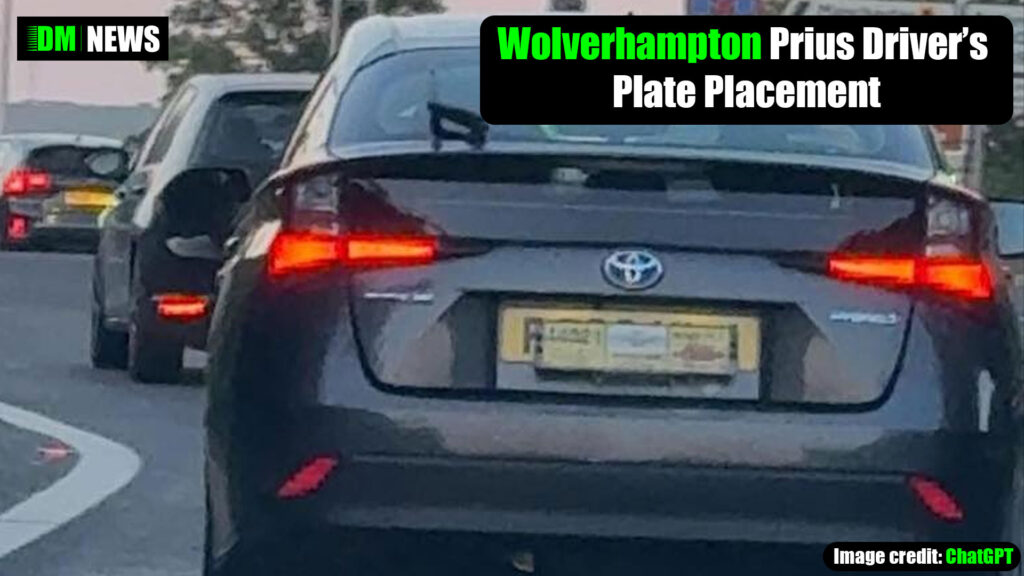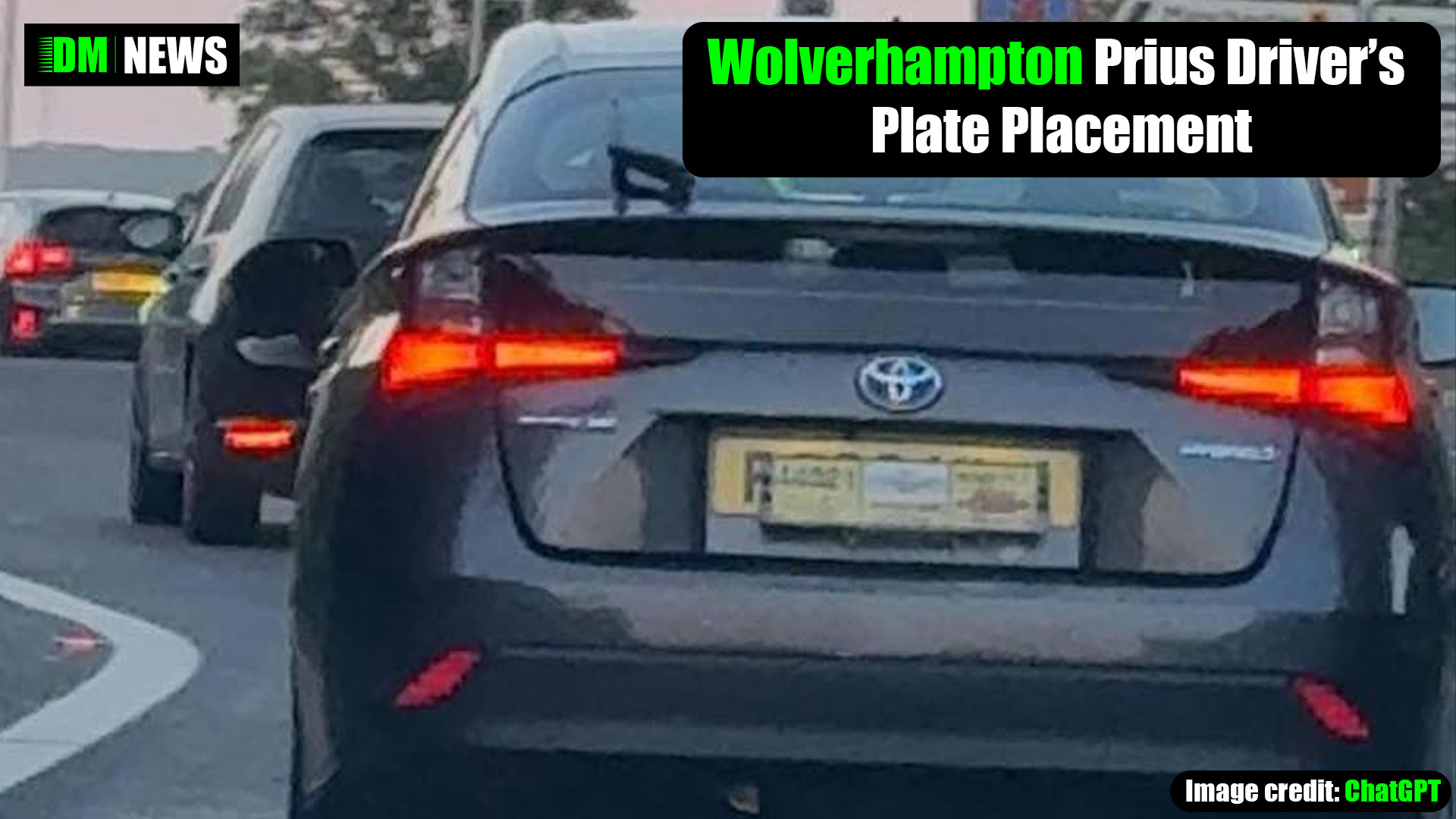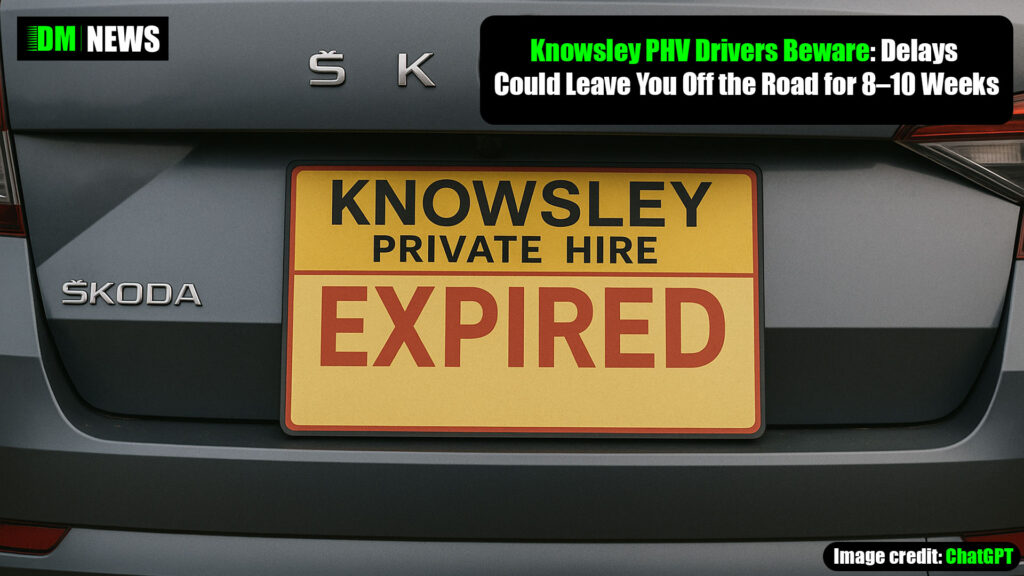A Toyota Prius licensed in Wolverhampton has sparked widespread criticism after being spotted with its private hire vehicle (PHV) plate mounted directly over the car’s rear registration plate. This questionable decision has raised serious concerns about legal compliance, road safety, and enforcement visibility.

Why Plate Placement Matters
In the UK, private hire vehicles are required to display both registration plates and PHV plates in a way that is clearly visible and unobstructed. These requirements are not just for show — they serve a crucial function in public safety, regulatory compliance, and passenger assurance.
According to Wolverhampton City Council’s licensing policy, PHV plates must be:
- Fixed to the rear exterior of the vehicle,
- Immediately adjacent to the number plate,
- And must not obstruct the registration mark in any way.
This is supported by UK-wide legislation under the Road Vehicles (Display of Registration Marks) Regulations 2001, which states that registration plates must be legible and not covered or obscured under any circumstances.
Consequences of Incorrect Plate Placement
Improper PHV plate positioning can lead to serious consequences for both drivers and passengers:
- Fines and Penalty Points
Obstructing a registration plate is a criminal offence. Drivers may face fines, penalty points, or even revocation of their private hire licence. - Vehicle Seizure or Suspension
Councils have the power to suspend a vehicle licence if it’s found to breach any of the vehicle condition regulations, including improper plate display. - Enforcement and Policing Issues
Police and licensing officers rely on visible plates for quick identification during checks or when investigating incidents. Obstructing the view impedes this process. - Passenger Trust and Safety
Clear plates reassure passengers that the car is legally licensed and can be trusted. A covered plate could raise doubts and result in loss of custom or negative reviews. - Insurance Issues
Non-compliance with vehicle regulations may invalidate insurance policies, leaving both the driver and passengers vulnerable in the event of an incident.
A Wake-Up Call for the Trade
This Wolverhampton Prius is now circulating on social media as a cautionary example for other drivers. The image is a strong reminder that shortcuts or “DIY fixes” around licensing regulations can have serious consequences — both legally and reputationally.
All PHV drivers are urged to check their plate placements regularly and seek guidance from their licensing authority if unsure. Compliance is not only a legal obligation — it’s a cornerstone of passenger safety and public trust in the industry.
Thanks for visiting DM News! If you’ve got a question, story, or anything you’d like to say, head over to DriverMatty.com — I’d love to hear from you! And while you’re there, don’t forget to check out my other websites and social media channels.






